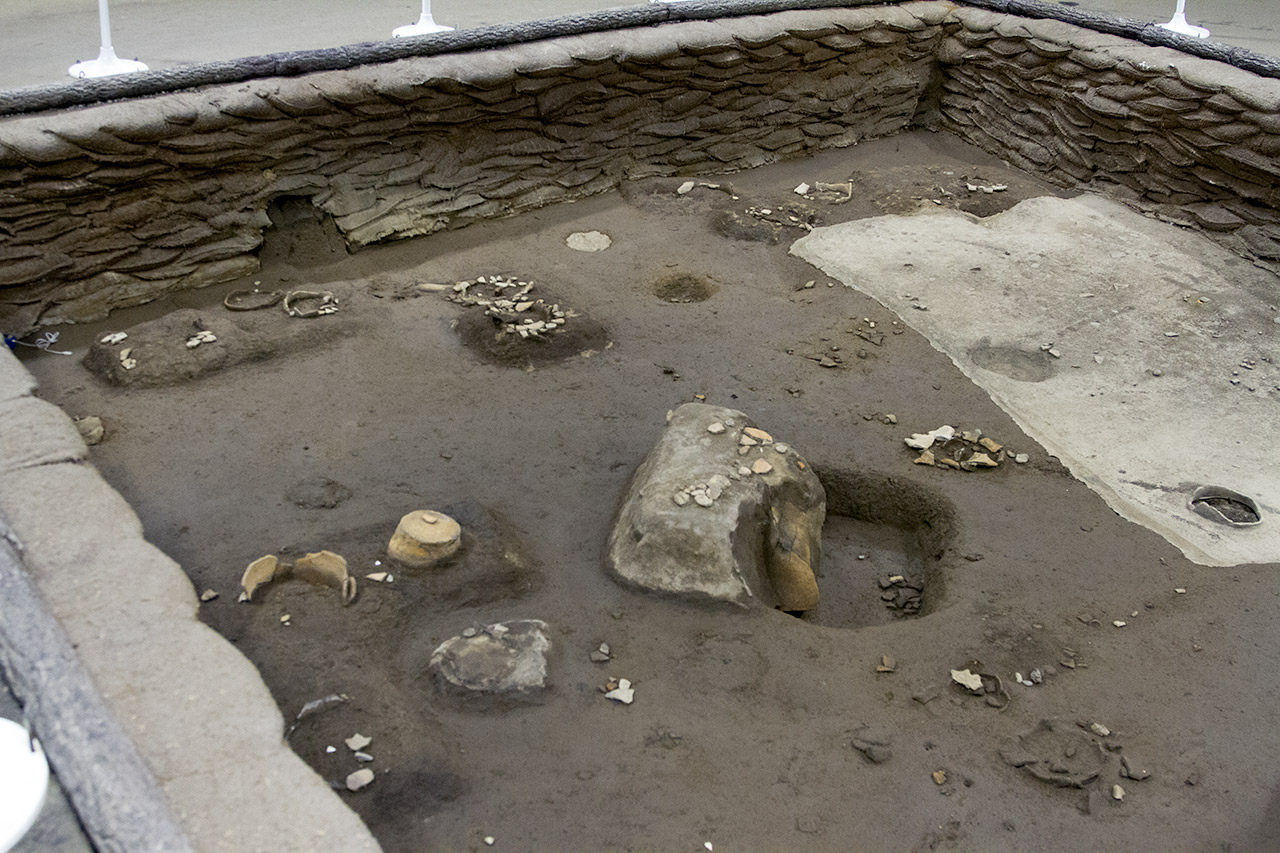

Middle Saxon Period (early/mid 7th – mid 9th century AD) By the 7th century for the most part stamping is the only decoration.In the 6th century linear designs and stamping, later this becomes stamping and bosses.Late 5th century bosses have straight or curvilinear designs.5th century pottery has linear designs – straight or curvilinear lines.Decoration on funerary vessels is very variable.

Decorated vessels tend to be found on cremation sites.

Nene Valley colour coated-ware (200 AD – late 4th century AD).New Forest colour-coated ware (260 – 370 AD).Colchester colour-coated ware (120 AD – late 3rd century AD).Decoration on neck parallel vertical incisions.Rims may be decorated with oblique or trans parallel incisions or impressions.Decoration on some bowls, more later in the period.Predominately ‘S’ profile bowls with rolled rims and carinated shoulders.Green wood thrown on to the fire towards the end of firing will produce a smoky, high-carbon, environment, also resulting in black and grey pottery.Įarly Neolithic Pottery (c.In an oxidising kiln, grey pottery will result if the pots are removed before the carbon has had time to burn out.Reducing environment: as there is no excess of oxygen, the carbon will not burn out, resulting in a grey or black colours.Clay with a high chalk content will turn white.After carbon burn-out, iron compounds in the clay will convert to ferric oxide and the pot will turn red, or grey if there is less iron.Oxidising environment: there is an excess of oxygen in the kiln, causing the organic matter in the clay to be released as carbon dioxide, resulting in red or brown cores.Fuel is used to dry the pottery before being placed in a kiln, as well as for the kiln firing itself.A higher proportion of water mixed with clay results in a liquid solution that can be added to the vessel surfaces to form a slip. Water is mixed with clay to turn it into a workable medium.Unlike clay, such fillers do not hold water, and therefore reduce the amount of water in the pot and the shrinkage of the pot during firing. sand, shell, rock fragments), but also deliberately added (e.g. Inclusions – often incorporated naturally into the clay (e.g.Clay – mostly derived from sedimentary deposits brought by rivers, glaciers, wind etc.This Jigsaw introduction to pottery identification is intended to get you started with basic guidelines and chronology. As pottery techniques and fashions have evolved so it is often possible to be very specific in terms of date and source. Pottery is usually the most common find and potsherds are more stable than organic materials and metals. Pottery identification is a valuable aid to dating of archaeological sites.


 0 kommentar(er)
0 kommentar(er)
